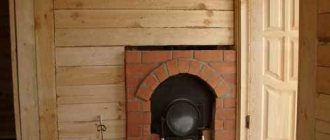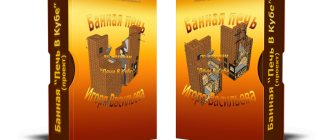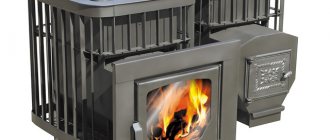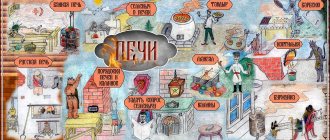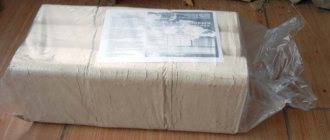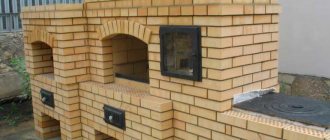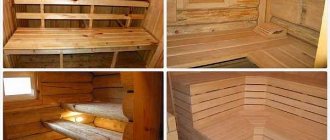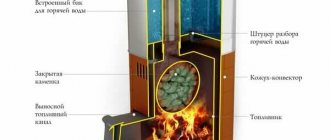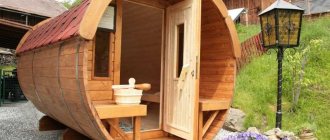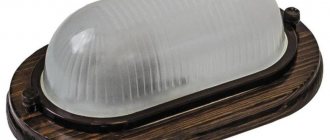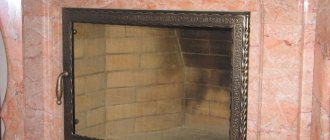Currently, baths and saunas are very popular. For a long time, people went there in order to receive not only physical, but also spiritual cleansing. As you know, the heart of almost any bathhouse is the stove, the productivity of which depends on the temperature, air humidity, and steam intensity. In addition, it must be completely safe, have a fairly neat aesthetic appearance, and retain heat for a long time.
A potbelly stove is one of the simplest and, as a rule, the cheapest and most unpretentious types of household stoves that you can make with your own hands. Depending on the conditions of future intended use, there are several options for buildings that differ from each other.
Design features and types of furnaces
The classic Russian bathhouse is close to many people and is very popular among owners of private houses and summer cottages. This is not only entertainment and relaxation, but also great health benefits. This is why so many people value it, trying to provide themselves with such an attribute in their own home.
Typically this design weighs about 800 kg. This makes preparation necessary for its installation. The foundation must be at least half a meter deep and 5 cm larger than the dimensions of the stove on each side. If an iron sauna stove of a simplified version is not so heavy, then a foundation is usually not needed. It can be installed on a concrete floor.
If the stove is wood-burning, you will need a grate. You can make it yourself or order a ready-made version in the store. The grate is set in height as the level of the firebox door itself. From the side of the fuel compartment, 30 cm from the door.
The outer wall is half the thickness of a brick. Inside the fuel chamber, the following trick is often used: they make bevels for the coal that has burned, so that it eventually ends up on the grate.
Any oven will still consist of the following main parts:
- Ash pan. This is the space under the firebox for collecting ash, which will need to be cleaned out periodically.
- This door is needed to allow air flow into the structure so that the fuel flares up better.
- Chimney damper. Needed to provide the required draft in the stove. When it is fully open, the fuel burns hotter and, accordingly, burns faster. When the wood burns out and coals remain, the valve is closed. which helps keep you warm. But this should be done after they have cooled down, when they stop burning. Otherwise, to avoid harm to health, leave a gap of about two cm to allow air to pass through.
- Boiler (coil). Here the water is heated, due to the steam of which the bathhouse “works”.
Each oven has its own characteristics. Types of ovens:
Wood-burning sauna stove. This is the most popular oven option. It consists of a firebox, chimney, ash pan and grate. Such stoves are made of metal or stone. They so often become the choice among bathhouse fans because they have advantages: even the small dimensions of the device can provide enough heat to warm up a large room. Such furnaces are used even when there is no gas supply at the site. This type of oven is the easiest to use. It also has a calming effect - the sound of crackling firewood.
Cast iron stove. They, in turn, are divided into temporary and permanent combustion furnaces. In the first case, firewood is used for the firebox. You can use the sauna when all the wood is burned. For a continuous combustion furnace, liquid fuel or gas is used as fuel. In the second option, the steam room is suitable for use already when the stove is just being heated. This type of stove will warm up the rooms faster and distribute the steam more evenly throughout the entire area of the room.
Electric oven. It comes in different sizes, has different characteristics in terms of efficiency and power. Like the previous one, it heats up quickly and lasts a long time. The advantage is that an electric stove does not require a chimney. They are also not expensive.
Finnish sauna stove. They produce dry steam combined with high temperature. Such stoves come in both electric versions and those using wood as fuel. You can make such a stove with your own hands. All you need is special drawings and instructions.
In order to use the stove to its maximum, it is advisable to know some features. For example, a wood-burning sauna stove can also be heated with other solid fuels. Coal and briquettes are allowed. If you approach the task of making a stove for a bath correctly, it will serve for a long time and will delight you with its reliable operation.
a8036fda206dc9ae23b336cf6cd695a2.jpe
Cast iron stoves are connected to a central gas supply for operation. The use of gas cylinders for these purposes is not recommended due to the increased risk of explosion.
Stoves that use liquid for combustion emit a specific odor.
When choosing an electric furnace, it is better to check the wiring first. Such stoves are not very economical for large rooms, which is also worth considering.
The cost of assembling the stove itself will depend on many parameters, primarily its size.
Necessary conditions for chimney operation
A fireplace or stove operates properly if the appropriate conditions are provided inside the firebox: vacuum for closed chambers and speed of gas movement for open ones. The minimum height of the fireplace chimney is about 5.5 meters from the combustion surface to the mouth of the chimney. But the height condition alone is not enough; there is a complex relationship between the shape and cross-sectional area of the chimney, its height and the geometric parameters of the fireplace insert. Errors in assessing all conditions can cause unsatisfactory operation of the fireplace - smoking, difficulty igniting, etc.
Types of stoves
The unit must efficiently heat the entire steam room, but not interfere with or pose a danger to visitors
It is worth paying attention to the design of the stove that you plan to install in the steam room. If we classify products according to the location of the fuel door, we can distinguish the following options:
- The firebox door opens directly from the steam room. This option is the most common. Firewood is loaded from the steam room. It is very convenient to adjust the draft by opening the door slightly. If the door is equipped with tempered glass, then the opportunity to admire the flames while vaping is added. However, it is worth remembering that when loading firewood, dirt remains on the floor, and oxygen in a small room is burned out too quickly;
- the firebox door opens into the dressing room or rest room. Fuel is loaded from the same room. This option is considered the best and safer, because the oxygen in the steam room is not burned out by the flame, it is easier to maintain cleanliness, space in the steam room is saved, and it is not necessary to install a separate heating system in the relaxation room. If, during the construction of the walls, a technological hole for an extended (remote) fuel channel was not provided in advance, then the partition will have to be partially broken;
- The firebox door faces the street. Perhaps an acceptable option only for the smallest baths or baths with seasonal use. Loading and reloading fuel and traction control will have to be done by constantly running outside, which will cause discomfort.
The furnaces themselves, by their design, can be vertical, horizontal, in the form of a barrel and other shapes. There may be a grid for stones and a hot water tank. Chimneys from metal stoves are discharged through the ceiling or wall.
Metal wood-burning stoves for saunas
Long-burning boiler principle
Before reviewing the unit, you need to understand the principle of its operation. The bubafonya stove runs on solid fuel - wood. Before you start burning it, you need to prepare the wood. In the boiler it is heated to 250 degrees Celsius using paper ignition.
When charring, wood decomposes into simple chemicals: gases and vapors. When the temperature reaches 300o Celsius, the gaseous components ignite, accelerating the thermal reaction.
To protect against fire, and also to prevent it from spreading throughout the entire container, a protective screen is provided on the fireplace. A damper is used to regulate the temperature. When turned off, the air supply stops, as does the combustion process.
e73a5161b278f1b9b6cce9d093acdbd7.jpe b91f0cbcde1d75943e45664645a35bcc.jpe c66866520f2ead98723282e8dfc82f03.jpe c3e999ec2fa9779517be1a04935 82877.jpe
Brick laying
When laying out the first row, you should measure the gaps from the walls of the oven to the brick.
The approximate margin is from five to ten centimeters. Bricks are laid in half-brick increments, in a checkerboard pattern. The reinforcing mesh is spread on top of each row. It should not extend beyond the edges of the display, as this will spoil the appearance. The seams must be immediately rubbed with the remaining solution.
To guarantee constant air circulation around the structure, holes should be provided in the masonry itself. On each side you need to make 4 holes - from the bottom to suck in cool air, and from the top to release already heated air.
The laying of bricks is carried out to the very top of the furnace.
One, two and done
Currently, there are drawings of potbelly stoves with round and rectangular sections. The figure shows a diagram according to which a potbelly stove can be made with your own hands from an ordinary milk can; a similar design can be made from a metal barrel.
Potbelly stove from a can
In order to make a potbelly stove like this for a summer house or garage with your own hands, you will need a minimum of tools and materials:
- An old milk can (if you chose the option of making it from a barrel, then the barrel is made of metal);
- Metal rod with a diameter of 6 mm;
- Retraction. If you have the skill, you can make it yourself;
- Hammer;
- Chisel;
- File.
You can start working with your own hands. We specifically did not indicate the dimensions so that the master would base it on the diameter of the barrel or can used.
First you need to make a blower. To do this, a rectangular hole is cut below the neck of the can (barrel). The edges of the hole are processed with a file.
After this, it is necessary to cut a hole in the bottom of the can (barrel) of such a diameter that you can subsequently insert the outlet tightly (see the article Chimney for a potbelly stove). This is done as follows:
- At the site of the future chimney, markings are made at the bottom of the can or barrel. The diameter should be 2 mm less than the diameter of the outlet
- Using a chisel and hammer, cut a hole according to the markings
- The hole is leveled using a file. A round file is best for this.
- The outlet must be pressed tightly into the hole. If the outlet does not fit, the hole is finished with a file. In any case, the outlet should fit tightly
- A snake is bent from a metal rod; it will act as a grate
- The finished grille is bent so that it can be inserted into the neck
- The inserted grate is aligned inside the can (barrel). The grate is made from reinforcement and welded to the body. As can be seen from the picture, there are two doors installed here for the blower and firebox. Such stoves can not only warm up a room well and quickly, but they can also be used to successfully cook food.
The potbelly stove is ready. If you wish, you can make a stand for it yourself. If you install a damper damper, you will get a stove with adjustable draft. Setting up such a damper is quite simple.
As you can see, a potbelly stove can be made with your own hands without special tools and materials. Simply install a stove made from a barrel or can in the desired location and connect the chimney. Your potbelly stove made from a barrel will regularly warm the room until you install stationary heating.
The main stages of making a potbelly stove
1. All the details are marked on a sheet of metal: 6 steel rectangles for the walls of the oven, 1 rectangle for creating a smoke reflector, plates for the grate and latch for the door. 2. Cut
sheet metal can be found at any metal depot. The guillotine, unlike the grinder, allows you to cut (chop) it more accurately. In this case, there will be no need to do straightening (alignment of sheets).3. The furnace body is made in the form of a rectangle. Their sides are joined together at an angle of 90° and welded together.
4. To avoid mistakes, the furnace box is first only tacked by welding in several places, and only then, after checking its horizontal and vertical positions, its seams are welded.
Important! All connections in the body are thoroughly welded; To check the seams for leaks, you can coat the joints with chalk or kerosene. 5
Welding seams are cleaned with a wire brush.6. The internal space of the potbelly stove is divided into three parts: the firebox, the smoke circulation chamber and the ash pan. To separate the firebox from the ash pan, a grate is laid between them, on which the fuel will be placed. To do this, at a height of 10-15 cm from the bottom of the stove, 5x5 cm corners are welded on the sides and on the back of the box. On which the grill will be located
5. Welding seams are cleaned with a wire brush.6. The internal space of the potbelly stove is divided into three parts: the firebox, the smoke circulation chamber and the ash pan. To separate the firebox from the ash pan, a grate is laid between them, on which the fuel will be placed. To do this, at a height of 10-15 cm from the bottom of the stove, 5x5 cm corners
. on which the grille will be located.
Advice.
It is better to make the grate from 2-3 detachable parts. Otherwise, when replacing a burnt grate, it will be difficult to remove it from the firebox.
7. The grate is welded from thick steel rods or strips 30 mm wide. They are attached to 2 stiffeners - rods with a diameter of 20 mm. Since the grates burn out over time, it is better to make such a grate removable.
Manufacturing of grate
8. At a distance of 15 cm from the top of the box, two strong rods are welded, on which one or two removable reflectors
– thick-walled sheets of metal that will delay the flow of hot gases and send them for afterburning. However, they should not completely block the oven. To allow hot smoke to enter the chimney, an indent of about 8 cm is made from the front (for the first sheet) and back of the stove.
Diagram of the passage of gases in a simple potbelly stove and stove with an installed reflector
9. Next, the upper part of the box is welded, and then a hole for the pipe
.
7b322d8423a7dadf138a51c55e6975c2.jpe b7cefa9acf3137f0016fdbcbaff2b0fa.jpe 9f6cac380670ce1bd8016126517b4cb8.jpe
5c442439af9dde1c6eab9f7923ded6d5.jpe
fd2d612e384629fa06d7f9f58324af72.jpe
Pipe hole
10. The front part of the stove with holes cut in it for the firebox doors and ash pan is welded last. 11. The size of the firebox door must be sufficient to allow fuel to be added and grates to be changed without effort. The hole for the ash pan is made a little smaller. 12. The hinges are welded first to the door, and then to the body of the potbelly stove. They can be bought ready-made or welded from two tubes of different diameters. Door handles can be made from a strip of metal or rod.
Important! When attaching the doors, you should fit them to the body as tightly as possible; To do this, they are straightened (leveled) and cleaned with an emery wheel. Wedge latches closing the doors are adjusted to the body as tightly as possible
13. You can cook food or heat water on such a stove. To do this, a hole of the required diameter is cut in the upper part of the box. Stove burner
.
which will be inserted into this hole can be purchased at any hardware store.14. For ease of use, the structure is installed on legs
or a welded stand made of pipes.15.
The chimney pipe is connected to the stove using a sleeve
.
16. For inserting a gate valve
. to regulate the smoke output, two holes are drilled in the pipe. A metal rod is inserted into the holes and bent at 90°. A metal “penny” is attached to it in the center of the pipe - a gate, the diameter of which should be slightly less than the diameter of the pipe itself by 3-4 mm.
Gate valve for adjusting smoke output
Construction of a potbelly stove: features, principle of operation, arrangement of heat exchangers
A potbelly stove with a water circuit works as follows:
- Firewood is loaded into the firebox.
- They light a fire, the heat is transferred directly to the water tank or the recuperator coil.
- Hot water enters the heating or water supply system.
- Remaining heat and flammable gases are removed from the room through the chimney.
- The ashes fall through the grate into the ash pan.
The design of the water circuit unit uses two energy harvesting principles:
- Direct thermal energy collection. The heat exchanger circuit is located inside the stove. Heat transfer immediately begins from the contact of the open flame and the boiler tubes. The water in the radiator boils and enters the heating system. From there it is sent to water supply pipes. The heat exchanger experiences large temperature differences (the contrast between the temperature of the water and the heat inside the oven).
- Collection of secondary heater radiation. The boiler circuit is located outside the heater. Being outside, it collects secondary thermal radiation from the heated metal surface. The degree of heating of the heat exchanger is lower than in the previous case, temperature differences are not so significant. The water in the device circuit begins to heat up after the stove warms up.
Photo gallery: common types of heat exchangers
Mineral salts form inside the boiler. Therefore, instead of water, it is more advisable to use antifreeze or antifreeze, which contain additives that prevent the formation of mineral deposits. The most common heat exchanger designs:
- a water tank built into the stove - a capacitive boiler;
- tube boiler - a tank in the form of a water jacket around the stove or chimney - capacitive heat exchanger;
- main boilers - a coil spiral or a water conduit passing through the active heat transfer zone.
Calculation of the main parameters of a potbelly stove with a water circuit
To calculate the dimensions of a stove with a water circuit, you need a drawing, drawing or sketch of the future device. This will help avoid manufacturing errors.
Having chosen a suitable project, we determine the parameters: length, height, width. We calculate the dimensions of the combustion chamber, the length and diameter of the pipe, and the height above the floor. A potbelly stove is characterized by high temperatures inside the boiler, so metal with a thickness of more than 3 mm should be used. Or carry out scheduled repairs every 2-3 years.
Thick-walled alloy metal is used in the manufacture of potbelly stoves
Installation and connection
When installing the stove, you must strictly follow the fire safety rules:
- The distance to walls and surrounding objects must be at least 800 mm. The walls can also be covered with ceramic tiles.
- All parts of the chimney must be tightly connected.
- The room must be equipped with a supply and exhaust ventilation system.
The chimney is installed like this:
- We fix the first piece of pipe above the chimney opening.
- We increase the pipe bends to the ceiling level.
- We make holes in the ceiling with a diameter of 170 mm. We remove a layer of thermal insulation around the hole to prevent fire.
- First, we mount the pass-through glass, then insert the pipe into it.
- Next, we connect the pipes to the external chimney.
- We apply bitumen to the pipe and insulate it.
If you need to heat a large area, you can connect the stove to a heating panel. This will increase the heat flow and allow it to be retained longer.
Content
- Options for brick chimney duct laying
- Step-by-step instructions for creating a brick chimney with your own hands
A brick chimney is one of the most inexpensive and reliable structures, which is why most owners of fireplaces or heating stoves choose it. Many companies provide services for the construction of chimneys of this type, but you can build it yourself and save money. The question arises: how? Let's figure it out.
Brick chimney with a dome to protect it from precipitation
Before you figure out how to create a brick chimney with your own hands, you need to decide what types of masonry exist.
What can a Bubafon cauldron be made from?
Half of the entire structure is the boiler, which can be made of any material, suitable shape and characteristics. These may be the following items.
- Do-it-yourself bubafonya stove from gas cylinders. Welding cylinders are the best basis for a boiler. Just adjust it to size and you can use it. Since the gas is under pressure, it is held back by thick metal walls, which will prevent burning in the stove.
- Old fire extinguisher. Large volume industrial fire extinguishers are convenient for boiler making. Despite the fact that their diameter is smaller, they are able to withstand thermal stress.
- Metal barrel. Manufacturing instructions are similar to the previous options. To prepare, you need to cut out the top and use it as an air vent.
- Pipe. A wide sewer pipe with wide walls is suitable for the boiler. But to do this, you need to cut two circles from sheet steel yourself and weld them as a bottom and a lid.
- Homemade body made of sheet steel. You can make your own boiler from a steel sheet by rolling it into a cylinder and welding it.
One of the simplest barrel designs
One of the easiest ways to assemble is from a tin barrel. It has thin walls, which reduces efficiency and low heat transfer. The advantage of the method is the large loading volume and on one tab it can work for more than twelve hours. Barrels are standardized sizes. If the walls burn out, it will be easy to replace it with a new one.
Assembly instructions:
You need to remove the weld that secures the cover. It is best to do this with an angle grinder to prevent the formation of burrs. To ensure a perfectly even seam, you can use a diamond-coated disc. The edges of the barrel are beaten with a mallet or hammer. On the lid, on the contrary, they are flared. As a result, the lid should fit tightly onto the barrel. A hole is drilled in the center for installing the chimney. The distributor will require a lid from a similar barrel. If this is not available, the part can be made from sheet steel. Air vents are welded to the lower part. They can be made from sections of U-shaped profile or channel. This is necessary to increase the performance of the stove. If you need low efficiency for a small room, you don’t have to do this. A damper is mounted on an axle on top of the hot air pipe. To increase ease of use, it is better to provide a “wing” fastening method. A hole is made on the body for the chimney pipe
a32e90f082c6ee15780523adacd52837.jpe
f902fa262958931bce6ad7197ef00c2c.jpeIt is important that the seam is sealed.
For added convenience, you can install a screen made of a solid metal sheet.
Cylinders and pipes
Do-it-yourself bubafonya stoves made from a gas cylinder are relevant. The principle of manufacturing from a cylinder and a pipe is similar. The main difference is that the pipe will need to be prepared. Two circles in diameter are cut from a sheet of steel and the bottom is welded.
You need to cut several steel disks to fit the diameter of the cylinder. In each of them you need to cut out a small segment to make it larger than a semicircle. They are installed inside by welding
It is important to weld them so that they are mirrored to each other. This results in a multi-stage system for lifting air. At the level of the first floor, you need to make several holes in the wall with a diameter of 5 millimeters. The end of the channel is connected to the outlet of the pipe. In the middle of the wall there is a door for a rectangular firebox. A grate is mounted below the door.
Chimney requirements
You can install a metal chimney for a stove with your own hands, the main thing is to do it correctly, otherwise, due to incorrect calculations, the load on the heating system will increase, the room will become smoky, etc.
We have previously written about materials for chimneys and recommended bookmarking the article.
The first thing you should pay attention to when buying a chimney pipe is its shape. Experts recommend using cylindrical pipes; they are better than others for removing waste gases and smoke.
We also recommend studying this topic:
Cleaning the chimney pipe from contaminants: possible methods
Many owners of fireplaces and stoves are wondering how to clean a chimney? And this is no coincidence, because a decrease in draft can lead to failure of the chimney and fire. Let's look into this issue.
Most often, steel pipes are used to construct a stove chimney. Compared to a brick chimney, they are much easier to install.
The material from which the chimney is made is no less important. If we are talking about a highly acidic environment, then it is best to use stainless steel pipes with molybdenum. A stove chimney can also be made of brick, but the most popular material is alloy steel. We previously wrote about choosing a galvanized steel chimney and advised you to bookmark the article.
The size of the chimney directly depends on the size of the heating structure (stove). To correctly determine the height of a structure, you need to seek help from building code documents. Errors in calculations lead to a decrease in draft and the appearance of traces of soot in the room. In order not to make a mistake with the diameter and length of the pipes, you can use a suitable ready-made project with dimensions from the Internet.
The table shows the recommended dimensions of the firebox in centimeters for a chimney height of 5-10 meters
Basic requirements for metal chimneys:
- Pipes must be well insulated.
- Before installing the chimney, you need to make the correct calculations and prepare a project.
We advise you to study the material on installing a heat exchanger on a chimney with your own hands on our website.
Compliance with these rules will allow the chimney to function without such consequences as smoke in the room, soot deposition, carbon monoxide inflow, etc.
Parts for a metal chimney (pipes, elbows, tees, connecting elements, etc.) can be purchased in specialized stores. If you don’t have construction skills, you can always turn to professionals.
Readers found these materials useful:
Heating equipment is rapidly improving. Solving the problems of energy saving and environmental protection leads to an increase in the efficiency of heating units and a reduction in emissions of harmful substances into the atmosphere. Therefore, modern stoves, fireplaces and boilers place increasingly stringent requirements on chimneys and their operating conditions.
Modern chimneys must be strong and durable. They are forced to withstand high temperatures of flue gases, provide smoke removal in conditions of low temperature of exhaust gases, resist the effects of condensate and aggressive acids, and also meet fire safety requirements.
Below are some criteria characterizing the quality of fireplace/stove chimneys.
- Aerodynamics - all elements of the chimney must ensure a favorable movement of the flow of removed flue gases (it should be borne in mind that the circular cross-section of the internal pipe facilitates the rapid and almost unhindered removal of flue gases upward; in a rectangular chimney, local resistance arises in each corner).
- Ease of maintenance - the smoother the internal surface of the chimney, the less the process of soot and dirt deposition develops, and accordingly, the less often cleaning is required.
- Resistance to corrosion and erosion - acids and moisture contained in combustion products corrode the seams of a brick chimney and the material of the chimney itself, therefore the chimney material must have certain characteristics of resistance to corrosion.
Description of a metal sauna stove and its main characteristics
You can, of course, buy a metal stove for the bathhouse. However, the best option would be to make it yourself. A simple option is a potbelly stove, which is a metal structure equipped with a door and a pipe. Low heat transfer and significant financial costs for purchasing fuel do not allow the heating installation to be used effectively, so it can be seen in rare cases.
Another thing is modern iron stoves. Their attractiveness, high efficiency and highest fire safety rating are impressive. They are made from sheet iron, more than 0.4 centimeters thick. The structural components are:
- It is customary to use a thermal chamber for filling and storing stones;
- There is a tank designed to store water with a volume of 30-70 liters.
An iron sauna stove requires lining with refractory bricks. This makes it possible to evenly heat the air in the room and makes the structure completely safe for use.
Installing a stove in a bathhouse
Since a proper steam room is always built of wood, the main requirement when installing a wood-burning heater is fire safety. To survive it, follow simple rules:
- the stove cannot be placed directly on a wooden floor, but only on a sheet of iron protruding 70 cm in front of the firebox;
- wall cladding made of flammable materials also needs to be protected from fire with sheets of roofing iron or mineralite;
- when installing a heater with a remote firebox, the opening in the wooden partition is also sheathed with non-combustible materials, as is done in the photo;
- the distance from the insulated chimney pipe to wooden building structures is 38 cm.
It is recommended to make a channel for venting combustion products outside from a double-walled sandwich filled with basalt wool. Often, the same square-shaped water tank, built directly into the ceiling, is used to insulate the chimney. How to properly install a stove in a bathhouse is shown in the diagram:
Chimney section
The most appropriate cross-section of the chimney is round, because the smoke moves spirally, then square and, finally, the most inconvenient, rectangular. The chosen shape of the channel section should be observed throughout its entire height; narrowing and turns can ruin the whole thing.
Wide chimneys, which are still found in old wooden houses, have poor draft and require high fuel consumption. They are corrected in the following way. The upper part is dismantled and a new, narrower chimney is installed or an asbestos-cement extension is installed on it. Another way: inside the old chimney, a new chimney made of stainless pipe is attached with clamps.
Types of fuel and types of stoves
Bathhouse stoves are divided into 2 main groups: metal (cast iron) and brick options. Brick sauna stoves are heat-intensive; they take longer to heat up, but also take a long time to cool down. An iron stove is an economical heating item due to its multitasking, simplicity and convenience of equipment. When choosing a stove or fireplace, you need to look not only at the design of the heat source, but also at the type of fuel. When burning the same mass, different fuels will release different amounts of heat. There are many variations of the energy carrier.
According to the aggregate content and type of fuel, all fuel groups are divided into solid, liquid and gaseous fuels. Solid is a common class of fuel, it includes: coal, peat, briquettes, firewood, pallets. They are used only in ordinary ovens as they burn quickly. Liquid fuels are kerosene, fuel oil, diesel, boiler, and coke liquid.
They have significant calorific value. The first type of gaseous fuel is natural gas, obtained from gas reservoirs, or associated gas from naphtha production. It has good calorific value.
a78f2b0af5758822efbf4cdd4bcb2e80.jpe
Chimney parameters
“and we always do this…” The shape and cross-sectional area of the channel, first of all, affect the throughput of the chimney, that is, the amount of gaseous combustion products that can pass through this cross-section per unit of time at a specific vacuum. Let hydrogasdynamics deal with the exact accounting of internal friction of gases, and a specialist should know that in most cases the speed of exhaust gases inside the chimney, as a rule, does not exceed 5 m/s, and a working open fireplace absorbs air from the room at a speed of about 0.5 m/s per entrance to the hearth.
